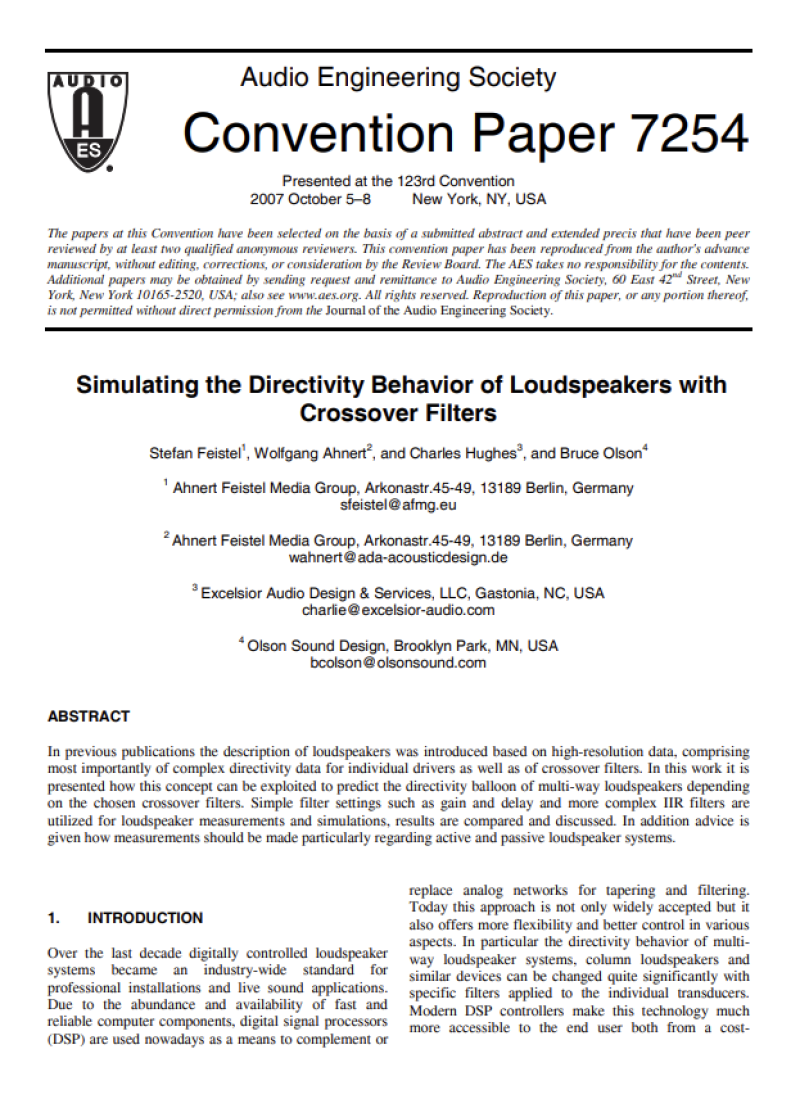Simulating the Directivity Behavior of Loudspeakers with Crossover Filters (Paper)
"Simulating the Directivity Behavior of Loudspeakers with Crossover Filters", paper presented at the 123th AES convention, New York, NY, USA, 5-8th of October 2007.
Link to the paper in the AES Online E-Library. (You have to be a member of the AES online library. Please note that subscription costs are low.)
Stefan Feistel, Wolfgang Ahnert
AFMG Technologies, Berlin, Germany
Charles Hughes
Excelsior Audio Design & Services, LLC, Gastonia, NC, USA
Bruce Olson
Olson Sound Design, Brooklyn Park, MN, USA
Abstract
In previous publications the description of loudspeakers was introduced based on high-resolution data, comprising most importantly of complex directivity data for individual drivers as well as of crossover filters. In this work it is presented how this concept can be exploited to predict the directivity balloon of multi-way loudspeakers depending on the chosen crossover filters. Simple filter settings such as gain and delay and more complex IIR filters are utilized for loudspeaker measurements and simulations, results are compared and discussed. In addition advice is given how measurements should be made particularly regarding active and passive loudspeaker systems.
Practical benefits:
This paper presents a new approach to modeling and designing multi-way loudspeakers and their crossovers. With technologies such as the Generic Loudspeaker Library (GLL) and EASE SpeakerLab, loudspeaker designers and manufacturers can save many hours of work because they can now design, and tune loudspeakers by means of an acoustic computer model. They can detect and eliminate errors without building or modifying the loudspeaker in the real world. All possible configurations and combinations can be simulated virtually in the software with high accuracy. It should be noted that the concepts presented in this paper can be applied in a similar manner to other types of loudspeakers with multiple transducers, such as steered columns, line arrays, and clusters.
